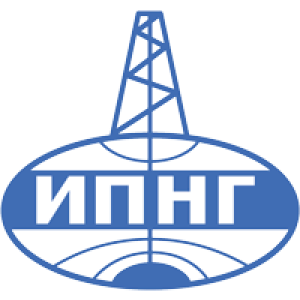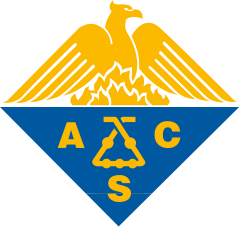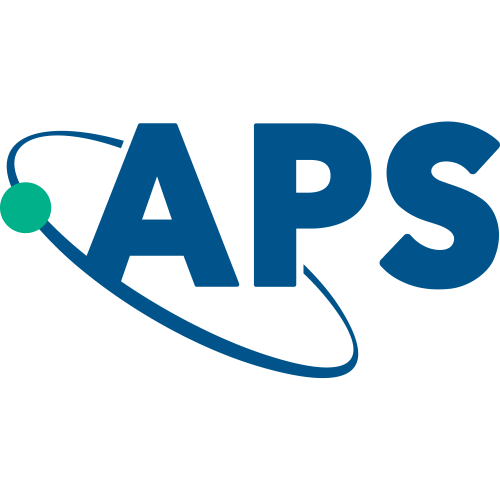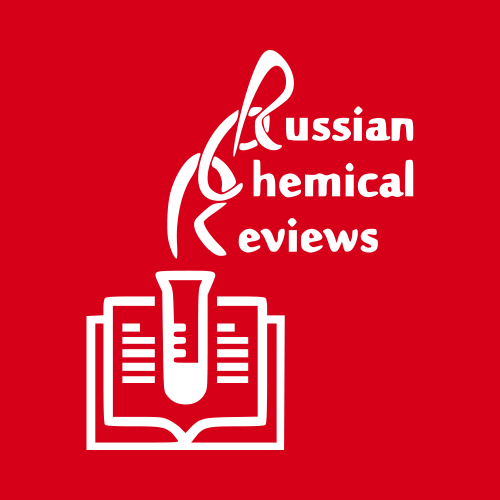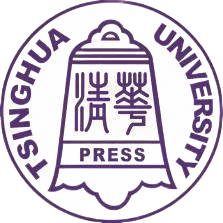Sulfur vacancy-rich MoS2 as a catalyst for the hydrogenation of CO2 to methanol
Jingting Hu
1, 2
,
Liang Yu
2, 3
,
Jiao Deng
1, 2, 3
,
Yong Wang
1, 2
,
Kang Cheng
1
,
Chao Ma
4
,
Qinghong Zhang
1
,
Wu Wen
5
,
Shengsheng Yu
5
,
Yang Pan
5
,
Jiuzhong Yang
5
,
Hao Ma
6
,
Fei Qi
6
,
Yongke Wang
1
,
Yanping Zheng
1
,
Mingshu Chen
1
,
Rui Huang
2
,
Shuhong Zhang
1
,
Zhenchao Zhao
2, 3
,
Jun Mao
1, 2
,
Xiangyu Meng
2, 3
,
Qinqin Ji
2, 3
,
Guangjin Hou
2, 3
,
Xiuwen Han
2, 3
,
Xinhe Bao
2, 3
,
Ye Wang
1
,
Dehui Deng
1, 2, 3
Publication type: Journal Article
Publication date: 2021-03-22
scimago Q1
wos Q1
SJR: 14.132
CiteScore: 57.7
Impact factor: 44.6
ISSN: 25201158
Catalysis
Biochemistry
Process Chemistry and Technology
Bioengineering
Abstract
The low-temperature hydrogenation of CO2 to methanol is of great significance for the recycling of this greenhouse gas to valuable products, however, it remains a great challenge due to the trade-off between catalytic activity and selectivity. Here, we report that CO2 can dissociate at sulfur vacancies in MoS2 nanosheets to yield surface-bound CO and O at room temperature, thus enabling a highly efficient low-temperature hydrogenation of CO2 to methanol. Multiple in situ spectroscopic and microscopic characterizations combined with theoretical calculations demonstrated that in-plane sulfur vacancies drive the selective hydrogenation of CO2 to methanol by inhibiting deep hydrogenolysis to methane, whereas edge vacancies facilitate excessive hydrogenation to methane. At 180 °C, the catalyst achieved a 94.3% methanol selectivity at a CO2 conversion of 12.5% over the in-plane sulfur vacancy-rich MoS2 nanosheets, which notably surpasses those of previously reported catalysts. This catalyst exhibited high stability for over 3,000 hours without any deactivation, rendering it a promising candidate for industrial application. The catalytic hydrogenation of CO2 to methanol is a crucial reaction for the recycling of this greenhouse gas, although the selection and related performance of commercial catalysts is still limited. Now, the authors introduce sulfur vacancy-rich MoS2 nanosheets as a superior catalyst for this process, rivalling the commercial benchmark system.
Found
Nothing found, try to update filter.
Found
Nothing found, try to update filter.
Top-30
Journals
|
5
10
15
20
25
30
|
|
|
Applied Catalysis B: Environmental
28 publications, 4.85%
|
|
|
Chemical Engineering Journal
27 publications, 4.68%
|
|
|
Nature Communications
26 publications, 4.51%
|
|
|
ACS Catalysis
26 publications, 4.51%
|
|
|
Angewandte Chemie - International Edition
23 publications, 3.99%
|
|
|
Angewandte Chemie
23 publications, 3.99%
|
|
|
Journal of Materials Chemistry A
18 publications, 3.12%
|
|
|
Journal of the American Chemical Society
14 publications, 2.43%
|
|
|
Applied Surface Science
11 publications, 1.91%
|
|
|
Advanced Functional Materials
11 publications, 1.91%
|
|
|
Fuel
10 publications, 1.73%
|
|
|
International Journal of Hydrogen Energy
9 publications, 1.56%
|
|
|
Catalysts
8 publications, 1.39%
|
|
|
Advanced Materials
8 publications, 1.39%
|
|
|
Nano Research
7 publications, 1.21%
|
|
|
Journal of Energy Chemistry
7 publications, 1.21%
|
|
|
Molecular Catalysis
7 publications, 1.21%
|
|
|
Chem Catalysis
7 publications, 1.21%
|
|
|
Journal of Colloid and Interface Science
7 publications, 1.21%
|
|
|
ACS Nano
7 publications, 1.21%
|
|
|
Catalysis Science and Technology
7 publications, 1.21%
|
|
|
Small
6 publications, 1.04%
|
|
|
Physical Chemistry Chemical Physics
6 publications, 1.04%
|
|
|
ChemCatChem
6 publications, 1.04%
|
|
|
Advanced Energy Materials
5 publications, 0.87%
|
|
|
Industrial & Engineering Chemistry Research
5 publications, 0.87%
|
|
|
ACS applied materials & interfaces
5 publications, 0.87%
|
|
|
Journal of Catalysis
5 publications, 0.87%
|
|
|
ACS Sustainable Chemistry and Engineering
5 publications, 0.87%
|
|
|
5
10
15
20
25
30
|
Publishers
|
50
100
150
200
250
|
|
|
Elsevier
205 publications, 35.53%
|
|
|
Wiley
110 publications, 19.06%
|
|
|
American Chemical Society (ACS)
102 publications, 17.68%
|
|
|
Royal Society of Chemistry (RSC)
58 publications, 10.05%
|
|
|
Springer Nature
53 publications, 9.19%
|
|
|
MDPI
21 publications, 3.64%
|
|
|
Taylor & Francis
4 publications, 0.69%
|
|
|
American Association for the Advancement of Science (AAAS)
2 publications, 0.35%
|
|
|
Oxford University Press
2 publications, 0.35%
|
|
|
IOP Publishing
2 publications, 0.35%
|
|
|
King Saud University
1 publication, 0.17%
|
|
|
Japan Society of Applied Physics
1 publication, 0.17%
|
|
|
Georg Thieme Verlag KG
1 publication, 0.17%
|
|
|
Frontiers Media S.A.
1 publication, 0.17%
|
|
|
AIP Publishing
1 publication, 0.17%
|
|
|
American Physical Society (APS)
1 publication, 0.17%
|
|
|
Higher Education Press
1 publication, 0.17%
|
|
|
Autonomous Non-profit Organization Editorial Board of the journal Uspekhi Khimii
1 publication, 0.17%
|
|
|
Research Square Platform LLC
1 publication, 0.17%
|
|
|
Korean Society of Industrial Engineering Chemistry
1 publication, 0.17%
|
|
|
Proceedings of the National Academy of Sciences (PNAS)
1 publication, 0.17%
|
|
|
Tsinghua University Press
1 publication, 0.17%
|
|
|
Walter de Gruyter
1 publication, 0.17%
|
|
|
Institute of Electrical and Electronics Engineers (IEEE)
1 publication, 0.17%
|
|
|
Science in China Press
1 publication, 0.17%
|
|
|
50
100
150
200
250
|
- We do not take into account publications without a DOI.
- Statistics recalculated weekly.
Are you a researcher?
Create a profile to get free access to personal recommendations for colleagues and new articles.
Metrics
581
Total citations:
581
Citations from 2024:
323
(55.98%)
Cite this
GOST |
RIS |
BibTex |
MLA
Cite this
GOST
Copy
Hu J. et al. Sulfur vacancy-rich MoS2 as a catalyst for the hydrogenation of CO2 to methanol // Nature Catalysis. 2021. Vol. 4. No. 3. pp. 242-250.
GOST all authors (up to 50)
Copy
Hu J., Yu L., Deng J., Wang Y., Cheng K., Ma C., Zhang Q., Wen W., Yu S., Pan Y., Yang J., Ma H., Qi F., Wang Y., Zheng Y., Chen M., Huang R., Zhang S., Zhao Z., Mao J., Meng X., Ji Q., Hou G., Han X., Bao X., Wang Y., Deng D. Sulfur vacancy-rich MoS2 as a catalyst for the hydrogenation of CO2 to methanol // Nature Catalysis. 2021. Vol. 4. No. 3. pp. 242-250.
Cite this
RIS
Copy
TY - JOUR
DO - 10.1038/s41929-021-00584-3
UR - https://doi.org/10.1038/s41929-021-00584-3
TI - Sulfur vacancy-rich MoS2 as a catalyst for the hydrogenation of CO2 to methanol
T2 - Nature Catalysis
AU - Hu, Jingting
AU - Yu, Liang
AU - Deng, Jiao
AU - Wang, Yong
AU - Cheng, Kang
AU - Ma, Chao
AU - Zhang, Qinghong
AU - Wen, Wu
AU - Yu, Shengsheng
AU - Pan, Yang
AU - Yang, Jiuzhong
AU - Ma, Hao
AU - Qi, Fei
AU - Wang, Yongke
AU - Zheng, Yanping
AU - Chen, Mingshu
AU - Huang, Rui
AU - Zhang, Shuhong
AU - Zhao, Zhenchao
AU - Mao, Jun
AU - Meng, Xiangyu
AU - Ji, Qinqin
AU - Hou, Guangjin
AU - Han, Xiuwen
AU - Bao, Xinhe
AU - Wang, Ye
AU - Deng, Dehui
PY - 2021
DA - 2021/03/22
PB - Springer Nature
SP - 242-250
IS - 3
VL - 4
SN - 2520-1158
ER -
Cite this
BibTex (up to 50 authors)
Copy
@article{2021_Hu,
author = {Jingting Hu and Liang Yu and Jiao Deng and Yong Wang and Kang Cheng and Chao Ma and Qinghong Zhang and Wu Wen and Shengsheng Yu and Yang Pan and Jiuzhong Yang and Hao Ma and Fei Qi and Yongke Wang and Yanping Zheng and Mingshu Chen and Rui Huang and Shuhong Zhang and Zhenchao Zhao and Jun Mao and Xiangyu Meng and Qinqin Ji and Guangjin Hou and Xiuwen Han and Xinhe Bao and Ye Wang and Dehui Deng},
title = {Sulfur vacancy-rich MoS2 as a catalyst for the hydrogenation of CO2 to methanol},
journal = {Nature Catalysis},
year = {2021},
volume = {4},
publisher = {Springer Nature},
month = {mar},
url = {https://doi.org/10.1038/s41929-021-00584-3},
number = {3},
pages = {242--250},
doi = {10.1038/s41929-021-00584-3}
}
Cite this
MLA
Copy
Hu, Jingting, et al. “Sulfur vacancy-rich MoS2 as a catalyst for the hydrogenation of CO2 to methanol.” Nature Catalysis, vol. 4, no. 3, Mar. 2021, pp. 242-250. https://doi.org/10.1038/s41929-021-00584-3.




